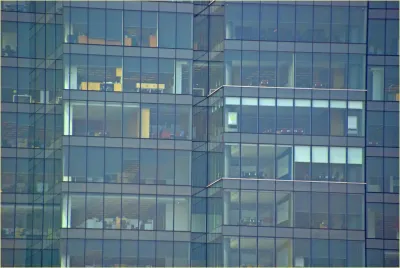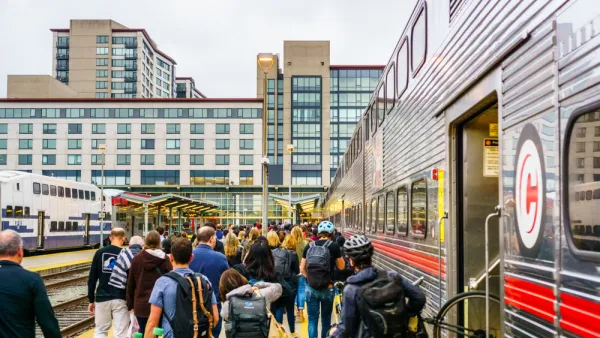An online calculator helps companies determine the broader impacts of their decisions to continue working remotely or return to the office.

Although remote work seems climate-friendly, "the reality is more complicated," writes Sarah Holder in Bloomberg CityLab. A new tool from Watershed Technology Inc. can help companies calculate the environmental impact of returning to the office or letting their employees continue working from home.
Watershed's website explains that, while remote work reduces the energy used in offices, it "shifts carbon: Emissions from energy and food still exist, but at employees’ homes, where they may be better or worse than in the office." Additionally, "a decentralized workforce might lead to more quarterly trips to meet face-to-face," and an exodus to the suburbs could mean increased carbon footprints for more households. The calculator lets companies "assess their greenhouse emissions more holistically, from the power their offices consume to the fuels burned in their supply chain" in order to "measure their impact, make plans to reduce it and make reports on progress."
When it comes to whether remote work is greener than returning to the office, "geography matters," says Holder. "The data analytics company ENGIE Impact suggested that if car commuting is already the status quo for employees at a given office, 'a reduction in commuting is the most reliable way to reduce carbon — even after factoring in the potential for increased energy use in a WFH environment.'" For companies whose employees already relied heavily on public transit, the reduction in carbon will be less impactful. According to Watershed, "the differences between cities are a result of different average household emissions per city, different electricity emissions based on which grid the city is a part of, and the mix of power generation for the grid, as well as average commute distances and respective transport mix for each city."
FULL STORY: The Environmental Implications of the Return to the Office

Analysis: Cybertruck Fatality Rate Far Exceeds That of Ford Pinto
The Tesla Cybertruck was recalled seven times last year.

National Parks Layoffs Will Cause Communities to Lose Billions
Thousands of essential park workers were laid off this week, just before the busy spring break season.

Retro-silient?: America’s First “Eco-burb,” The Woodlands Turns 50
A master-planned community north of Houston offers lessons on green infrastructure and resilient design, but falls short of its founder’s lofty affordability and walkability goals.

Test News Post 1
This is a summary

Analysis: Cybertruck Fatality Rate Far Exceeds That of Ford Pinto
The Tesla Cybertruck was recalled seven times last year.

Test News Headline 46
Test for the image on the front page.
Urban Design for Planners 1: Software Tools
This six-course series explores essential urban design concepts using open source software and equips planners with the tools they need to participate fully in the urban design process.
Planning for Universal Design
Learn the tools for implementing Universal Design in planning regulations.
EMC Planning Group, Inc.
Planetizen
Planetizen
Mpact (formerly Rail~Volution)
Great Falls Development Authority, Inc.
HUDs Office of Policy Development and Research
NYU Wagner Graduate School of Public Service




























